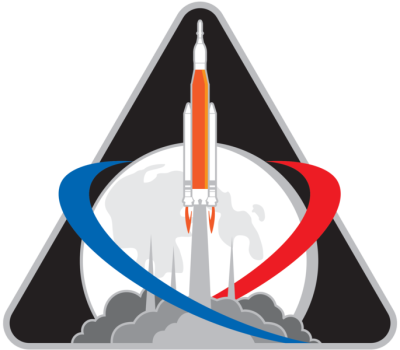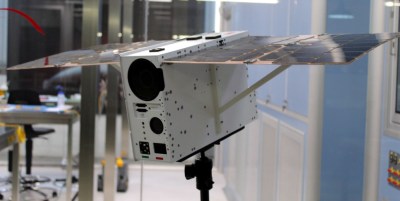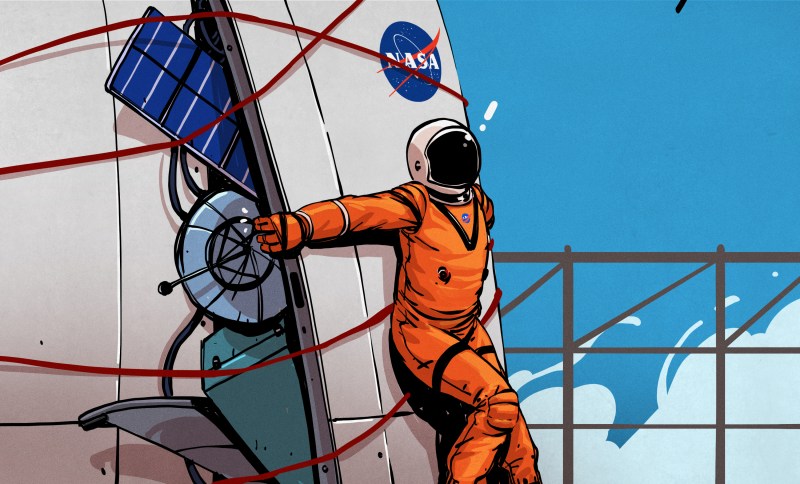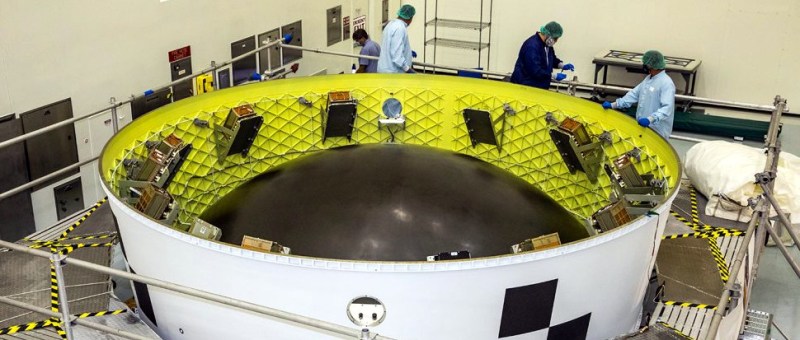NASA’s upcoming Artemis I mission represents a critical milestone on the space agency’s path towards establishing a sustainable human presence on the Moon. It will mark not only the first flight of the massive Space Launch System (SLS) and its Interim Cryogenic Propulsion Stage (ICPS), but will also test the ability of the 25 ton Orion Multi-Purpose Crew Vehicle (MPCV) to operate in lunar orbit. While there won’t be any crew aboard this flight, it will serve as a dress rehearsal for the Artemis II mission — which will see humans travel beyond low Earth orbit for the first time since the Apollo program ended in 1972.
 As the SLS was designed to lift a fully loaded and crewed Orion capsule, the towering rocket and the ISPS are being considerably underutilized for this test flight. With so much excess payload capacity available, Artemis I is in the unique position of being able to carry a number of secondary payloads into cislunar space without making any changes to the overall mission or flight trajectory.
As the SLS was designed to lift a fully loaded and crewed Orion capsule, the towering rocket and the ISPS are being considerably underutilized for this test flight. With so much excess payload capacity available, Artemis I is in the unique position of being able to carry a number of secondary payloads into cislunar space without making any changes to the overall mission or flight trajectory.
NASA has selected ten CubeSats to hitch a ride into space aboard Artemis I, which will test out new technologies and conduct deep space research. These secondary payloads are officially deemed “High Risk, High Reward”, with their success far from guaranteed. But should they complete their individual missions, they may well help shape the future of lunar exploration.
With Artemis I potentially just days away from liftoff, let’s take a look at a few of these secondary payloads and how they’ll be deployed without endangering the primary mission of getting Orion to the Moon.
Flying Economy Class
Ultimately, the goal of Artemis I is to demonstrate that the Orion capsule can enter lunar orbit, navigate and maneuver while near the Moon, and then safely return to Earth. Should this test fail, it will undoubtedly delay future Artemis missions, and could even put the plans for a human landing in jeopardy. For NASA’s long-term goals, it’s absolutely critical that this mission is a success.
The CubeSats along for the ride are in no way, shape, or form, a priority for NASA or Mission Control. While everyone would like to see them succeed, no special treatment or consideration will be given to these craft. If a decision needs to be made that will save the Orion at the expense of the secondary payloads, there’s no question which way it will go.
To prevent any possible interaction with the primary mission, the CubeSats won’t even be deployed until nearly two hours after Orion has separated from the ICPS. Once the capsule has moved a safe distance away, the small satellites will be sequentially released from angled dispensers mounted to the inside of the stage adapter.
The stage adapter includes a dedicated avionics package that is isolated from the primary mission electronics, and is responsible for determining when each spring-loaded dispenser is to activate and push out its respective CubeSat. A power bus was provided to charge the 18560 cells used in the CubeSats, but for safety, it is also isolated from the SLS’s own electrical system.
Unfortunately, that means the last time the CubeSats were charged was before the Orion spacecraft was mounted to the adapter in the Vehicle Assembly Building (VAB) back in October 2021. To further complicate matters, the status of each individual craft is currently unknown, as NASA requires the satellites to be powered-down until 15 seconds after their release from the stage adapter.
After sitting for nearly a year, there’s a very real possibility that the batteries in some of the satellites might have become depleted. In that case, the craft’s onboard photovoltaic cells will hopefully be able to recharge them once deployed. If not…at least the ride to space was free.
Research Worth the Risk
Riding to space on an untested rocket is already risky enough, but when you’re flying your satellite as the secondary payload on a prototype rocket without even knowing if its batteries are charged, that’s really rolling the dice. Given the odds, you might assume that the CubeSats would have simplistic missions — after all, why would researchers invest valuable time and material into such an uncertain proposition? But that ignores the one-in-a-career siren’s call of being offered a free trip to the Moon.
As it so happens, there’s some very interesting science crammed into those secondary payload dispensers, with several experiments representing the first of their kind. Here are just a few of the highlights:
OMOTENASHI
Perhaps the most ambitious of the secondary payload missions is the Outstanding MOon exploration TEchnologies demonstrated by NAno Semi-Hard Impactor (OMOTENASHI) built by the Japan Aerospace Exploration Agency (JAXA). This CubeSat will follow Orion all the way to the Moon, and use its thrusters to put itself on a collision course with the lunar surface. When the onboard radar determines it’s at the appropriate altitude, a solid rocket motor will ignite to decelerate the landing module, which will then free-fall some 100 meters (328 feet) to the surface. Just before touchdown, a 50 cm (1.6 foot) airbag will inflate to cushion the impact.
If everything goes according to plan, OMOTENASHI (which translates to “welcome” or “hospitality” in Japanese) will be by far the smallest vehicle to make a controlled landing on the lunar surface. While the mission is primarily designed to test the landing technique, the lander does have an accelerometer and UHF transmitter onboard that will hopefully return useful data should the 0.7 kg (1.5 lb) craft survive its close encounter with the lunar regolith.
As an interesting aside, the team behind OMOTENASHI has challenged the community to detect its telemetry signals both during its flight to the Moon and after it’s touched down on the surface. In the event that any Hackaday readers manage to pick it up, we’d love to hear about it.
ArgoMoon
The Italian ArgoMoon mission will demonstrate the techniques necessary for a CubeSat to maneuver in close proximity to another spacecraft, using the ICPS itself as the target. Once dispensed the satellite will fly in close formation with the ICPS, and will use its onboard cameras to photograph the SLS upper stage for historical purposes.
 As ArgoMoon is scheduled to be one of the first secondary payloads to be released, it will also have the opportunity to record the deployment of several other CubeSats. Due to the limited instrumentation of the dispensers, imagery from the craft will be used to determine if all of the satellites have been successfully deployed.
As ArgoMoon is scheduled to be one of the first secondary payloads to be released, it will also have the opportunity to record the deployment of several other CubeSats. Due to the limited instrumentation of the dispensers, imagery from the craft will be used to determine if all of the satellites have been successfully deployed.
Eventually, ArgoMoon will use its onboard thrusters to move away from the ICPS and put itself into a high-altitude orbit above the Earth. During the following months, the craft will be exposed to the sort of deep space conditions that traditionally CubeSats avoid by staying within the confines of Earth’s magnetic field. This time will be used to validate the radiation-hardened components developed by ArgoMoon’s manufacturer, Argotec.
NEA Scout
While Orion and several of the secondary payloads are headed to the Moon, the NEA Scout will be setting course for a different target: 2020 GE, a near-Earth asteroid (NEA) with a diameter of less than 18 meters (60 feet). While the CubeSat has thrusters for orienting itself, its primary means of propulsion will be a 86 square meter (925 square foot) solar sail. It will be unfurled between four extendable booms, using a mechanism derived from the one used in the Planetary Society’s LightSail spacecraft.
 After a lunar gravity assist, NEA Scout will be on course to intercept 2020 GE in late 2023. The craft will get within 1.6 km (1 mile) of the asteroid, and perform what mission planners believe will be the slowest flyby in the history of space exploration, passing it at a relative speed of just 30 meters (100 feet) per second. This will give NEA Scout hours to image the asteroid with its camera and sensors, making it the first time such a small object has ever been directly observed from a free-flying spacecraft.
After a lunar gravity assist, NEA Scout will be on course to intercept 2020 GE in late 2023. The craft will get within 1.6 km (1 mile) of the asteroid, and perform what mission planners believe will be the slowest flyby in the history of space exploration, passing it at a relative speed of just 30 meters (100 feet) per second. This will give NEA Scout hours to image the asteroid with its camera and sensors, making it the first time such a small object has ever been directly observed from a free-flying spacecraft.
The mission will not only be another important step in the development of solar sail technology, but the data collected from 2020 GE will help inform future planetary defense systems. Currently scientists don’t know if NEAs of this scale are actually solid objects or a loose mass of small rocks and dust, and it’s hoped the results of this up-close study will allow scientists to come up with plans to destroy or deflect similar objects if need be.
One for the History Books
While they may differ in scale and complexity, all of the secondary payloads on Artemis I promise to deliver exciting new science. The LunaH-Map, developed by Arizona State University, will attempt to create a detailed map of water deposits on the Moon’s surface which could greatly benefit future human exploration. BioSentinel will be the first long-duration biology study outside of low Earth orbit, and will study the impact of space radiation on DNA. Pick any mission from the list, and you’ll find yourself falling down a fascinating rabbit hole.
Over the years, much has been said about the enormous cost of the Space Launch System, which at this point has been in development for over a decade. Many argue that it’s a relic of “Old Space” mentality, and that new and more agile rockets from SpaceX and Blue Origin will make it obsolete before it’s even flown more than a handful of times. Only time will tell if those criticisms are valid, but the incredible scientific potential of this inaugural flight seems a clear indicator that at the very least, NASA intends to get their money’s worth out of their brand-new megarocket.

















“no special treatment or consideration will be given to these craft. If a decision needs to be made that will save the Orion at the expense of the secondary payloads, there’s no question which way it will go.”
The first statement’s a little strong: it’s not like NASA’s gonna be like “eh, we feel like chucking them out the back now, sorry that it screws your science.” The secondary payload considerations are just always, well, secondary to the primary mission goals. But for Artemis-I, the primary mission goals are pretty weak.
One of the huge advantages of doing lunar missions again in modern day is that the secondary science you can do nowadays is crazy: CubeSats are well-established technology and what can be done in a tiny volume is so much better than Apollo days. And the NRHO orbit gives you extremely low delta-V transitions to just a huge range of the solar system – cubesat missions to Jupiter become tractable.
Except, that’s literally what they are doing. My understanding is that they aren’t even going to release them until after the ICPS has made it’s final disposal burn, so there’s not even going to be a chance to adjust course prior to deployment.
Not true. Each Cubesat will be deployed between 1 and 8 hours after launch. My cubesat (Team Miles) will be deployed 7 hours after launch.
https://pbs.twimg.com/media/FaOjUiwXEAASRnj.jpg
Which will be hours after the upper stage has already made the disposal burn that will take it around the moon and out into orbit around the sun.
Any payload that DOESN’T want to get ejected into interplanetary space needs to turn around and come back under its own power.
See: SPACE LAUNCH SYSTEM DEPARTURE TRAJECTORY
ANALYSIS FOR CISLUNAR AND DEEP-SPACE EXPLORATION
In the first paragraph:
“Primarily, following separation from Orion, the Interim Cryogenic Propulsion Stage must be safely disposed, and another is that secondary payloads will be deployed only after Orion
separation to ensure safety of the primary mission. The first consideration
(ICPS disposal) constrains the latter (secondary payload trajectories).”
“Any payload that DOESN’T want to get ejected into interplanetary space needs to turn around and come back under its own power.”
Turn around?? The disposal burn targets a lunar gravity assist for disposal. The delta-Vs required to get into lunar orbit are very small. It’s literally in the same document you quoted from.
The accomodations for the various CubeSats occur in when they’re released. Orbits in the Earth/Moon system vary relatively quickly, especially because the disposal burn is already a multi-body orbit.
Any payload that doesn’t want to be on that trajectory is hitching a lift on the wrong spacecraft, but then there’s plenty of opportunities to hitch a ride to low Earth orbit.
This mission is a golden opportunity for small sats to hitch a ride to lunar space.
Not to mention that this mission has been planed for decades by literal rocket scientists. I’m pretty sure they’ve already planned how to get onto the trajectories they want. I’m also sure that any objections you have were thought of, and sorted, years ago.
Don’t forget, until Oscar 1 in 1961, all launches were single payload. Oscar proved the ability to launch multiple satellites, and they were probably glad that someone else offered up the guinea pig. Somebody had to be first
IIRC, they used a spring from Sears to push Oscar1 out.
It has to launch on the 15th, at 16:16:16, with 16 payloads, 16 astronauts in attendance, with 16. When it launches, No Man’s Sky 4.0 will be released.
At last, Polo is affable once again. A nod, a smile, even a companionable tap on the arm at one point. A friendship renewed.
As with notions for colonizing Mars-assuming warp drive is ever realized to make the 103 million mile commute at all practical-what to do about the lethal cosmic radiation which constantly bombards our moon? If anything, shouldn’t NASA and Musk the Great being studying possible ways to ensure against serious wobbling and other potentially cataclysmic lunar behaviors?
“assuming warp drive is ever realized to make the 103 million mile commute at all practical-what to do about the lethal cosmic radiation which constantly bombards our moon?”
Similar problem, same solution. Fix the fact that we live in quickly-decaying fragile bags of water. Heck of a lot simpler than trying to break the laws of physics.
Well, regarding the latter problem, then if I am presuming correctly, at least DNA damage from cosmic radiation would be rendered irrelevant in perhaps 40 years when total human memory and whatever comprises, contains, maintains and activates “consciousness” and enables brain/body functionality will be flawlessly transferred to ultra high order androids?
As for Martian commuting distance issues, even traveling at 4K mph (the speed of, say, an asteroid heading towards Earth?), it would still take androids ~ 2.9 years each way; not very practical for commercial and most other purposes. Perhaps after humans have shed the madness of over population (the hottest fuel driving climate change) and by the dawn of the android race a new kind of physics will validate warp drive transportation, and without need for huge energy consumption.
You’re so pampered. For centuries, traveling to the colonies from the home country was a multi-year endeavor. And thousand upon thousand sailors undertook those journeys. They did not have to risk high radiation, but malnutrition and scurvy instead.
But as always: high-risk high-reward
But also as always high risk is stupid if not necessary. Sailors of antiquity didn’t have benefit of our level of scientific understanding and technological achievement, so their risk/reward gambles had to be more aggressive. Sadly, the one thing both ages do share is human greed, ego, power lust and the pursued “glories of war”. Indeed, if the US and/or other “co-operating” nations diverted even 20% of what they historically spend and/or waste on “new and improved” weaponry and their total military operations towards robotics and other technologies applicable to outer space exploration-including installing and maintaining orbital asteroid deflecting systems-could likely be advanced at least 10 fold, and implemented as quickly.
Wait what? The work done in space exploration has been built largely if not almost entirely on the back of weapons research or even literal weapons, see rockets made from the minuteman missile. Asteroid deflecting will probably be done entirely with weapons in space, if even only the targeting to attach thrusters to it if we detect it soon enough. Space exploration itself came about due to the lofty goal of being able to bomb anywhere in the world from your own country, see sputnik/ space race.
Of course, that’s true but the point is that trying to therefore justify generations of military spending, presently at $801 billion, when it is a wholly inefficient and even contemptible engine for economic diversity and technological advancement.
History has long documented the intent and application of military and CoIntelPro spending as frequently a tool for imperialist control and long term exploitation of numerous poor but mineral and resource rich regions (South America, Caribbean, Africa), and “nation building” (Southeast Asia, Middle East) for coercing nations towards bending to the economic interests and geopolitical alignments pursued by the super elite managers of transnational investment capital. https://en.wikipedia.org/wiki/Trilateral_Commission
https://www.abebooks.com/9780896081031/Trilateralism-Trilateral-Commission-Elite-Planning-0896081036/plp
And, naturally, to provide cover for these immensely profitable private interests and justification for the size, budget and Machiavellian tactics of the armed forces, the continual creation and maintenance international hostilities are essential.
https://en.wikipedia.org/wiki/Council_on_Foreign_Relations#Current_status
And so has been the historic progression from CoIntelpro acts of government destabilization and assassination (character and bodily) in “host” nations to further realize corporate goals-both at home and aboard to the economic globalization and bipartisan enabling NAFTA policies; where concerns for national sovereignty, economic and political self-determination, the truth of what mostly drives deadly climate change and species extinction and the cost of the quantity and quality of every basic human necessity are valued far below that of the holders and managers of transnational finance capital.
That is, the “military-industrial complex”, largely survives and thrives because it enables MNCs and the largest global investment banks to secure present and long-term stability and under the most favored terms, regardless of human and environmental consequences.
And yes, also because war and rumors of war, in themselves, are BIG business-even to the extent of dealmaking with alleged enemies. For starters, Dick Chaney, who had certainly won the enormous government contract he wanted-and before his pal Bush ever took office (!) from the bi-partisan (and Hillary) approved Iraqi invasion, and thus without a single competing bid. https://en.wikipedia.org/wiki/Halliburton#Iraq_War . Countless pork barrel weapons contracts held by dozens of Fortune 500 companies fulfilled by political patronage, and on and on through the revolving door of corporate and political power-and all the while countless billions of lethal hardware and man hours, decade after decade, create comparatively little new wealth, scientific advancement, prosperity, to say nothing of international peace and safety, terrestrially and beyond.
One would think that by this stage in our history enough minds would have found humanity on a steady fast track towards self-destruction and have worked towards finding a better and practical way for all, such as: https://www.growthbusters.org/ https://en.wikipedia.org/wiki/Transhumanism
“The work done in space exploration has been built largely if not almost entirely on the back of weapons research”
I think what the original poster is saying is that if humans actually just devoted the money directly rather than doing it as scraps and leftovers, we’d be way better off. See also the Space Shuttle.
Nice artwork Joe Kim!
But I think you could have added a tennis racket to the stuff bulging from behind the door B^)
And Shaun the Sheep!
B^)
I do think it’s a shame that NASA didn’t allow for charging the Cubesat batteries while in storage, or even a 2-wire CANbus diagnostic.
Yes! NASA did allow us to to top up our batteries after the rocket was stacked as late as June of this year. I have one of those space craft on this rocket – Team Miles. And I designed the battery re-charge circuit
Thanks,
Do you have a link to your project?
https://miles-space.com/about-us/
https://www.youtube.com/watch?v=LSOR4a26BoQ
Thank you!
Very cool.
Not saying I doubt you, but this August 15th article from Science.org specifically lists Team Miles as one of the satellites that might have dead batteries because they weren’t able to recharge them:
https://www.science.org/content/article/stowaways-nasa-s-massive-moon-rocket-promise-big-science-small-packages
Has there been some kind of miscommunication?
Shhhh! They didn’t want word to get out, or the other Cubesatters would get jealous.
;^)
iMah, Yes! We have asked Eric Hand to correct the article and as of 9/8 it has not.
I’m wondering if once astronauts begin visiting the moon on a regular basis, to build a base or whatever, do you think individual astronauts will be limited to one or two moon missions, to limit lifetime radiation exposure? I wonder how many trip would be considered safe for an individual astronaut.
https://www.space.com/moon-radiation-dose-for-astronauts-measured
Lunar radiation dosages are actually pretty comparable to ISS levels (~2.6x higher, at least from GCR). To quote that article: “at 60 microsieverts per hour, that 25-year-old female astronaut could spend a total of nearly 700 Earth days exploring the lunar surface before violating her lifetime exposure limit.”
This is a bit dated, because the rules used to be linked to individual excess mortality and now they’re just a flat cap of 600 mSv (or, very usefully, 10,000 hours on the lunar surface).
Thanks for that info Pat! That’s much more allowable time outside of Earths magnetic field protection than I expected. That’s great.
Unless a solar flare hits the Moon, or a nasty, mean cosmic ray.
Flare yes, cosmic ray, no. The flare they’ll have advance notice for, so you’d presumably have plans for that.
Cosmic rays are included in the above, they’re the dominant radiation source. And no, if you get unlucky and a super-high energy one hits… that doesn’t matter. The difference in deposited energy is basically nothing (this is the Bethe-Bloch curve), it’s just the rate that matters.
High energy cosmic rays actually dose you with more radiation on Earth, because they shower in the atmosphere and become *lots* (lower energy, but that doesn’t matter). But it’s pointless anyway since the rate drops off so ridiculously fast.
Basically, the tl;dr is all cosmic rays are equally mean and nasty in space once they’re high enough energy to get to you (and those are basically a constant flux).
“OMOTENASHI”? Sheesh… NASA is scraping the bottom of the acronym barrel on that one.
JAXA. Where the X stands for exploration. The prosecution rests.
But yeah. You’ll have to call the Japanese bacronym police. NASA has no jurisdiction.
ACRONYM: Abbreviated Coded Rendition Of Nomenclature Yielding Meaning
B^)
OMOTENASHI (Outstanding MOon exploration TEchnologies demonstrated by NAno Semi-Hard Impactor) mission is a JAXA (Japan) and University of Tokyo technology demonstration mission.
https://nssdc.gsfc.nasa.gov/nmc/spacecraft/display.action?id=OMOTENASH
They are going to land a small impactor on the moon – and that is bad ass!